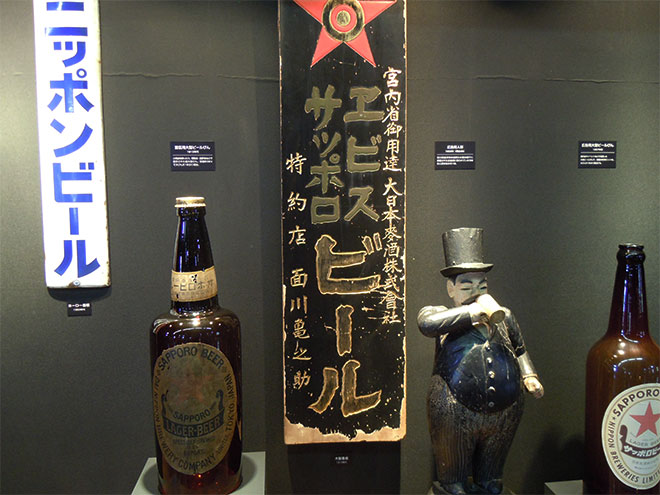When visiting Sapporo, trying some local beers, perhaps Sapporo Beer, is a must. Whether you’re already a fan or not, a visit to the Sapporo Beer Museum is highly recommended—you might just discover a newfound appreciation for it.
Access
How many times have I been here?
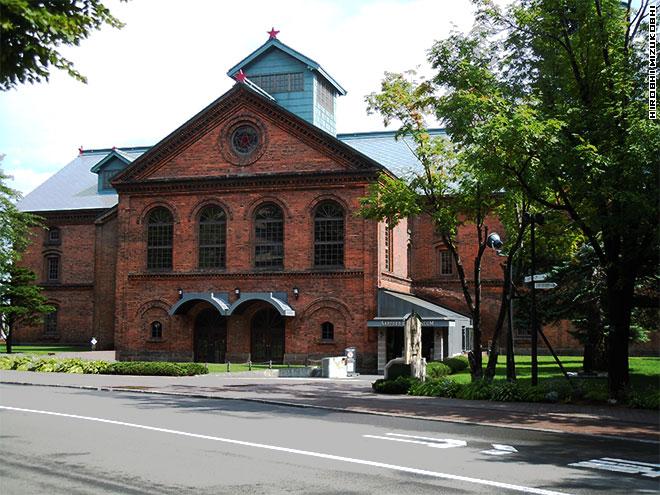
I visited the Sapporo Beer Museum at the end of summer in 2014. This is my second visit overall, but it’s my first time taking the museum tour, despite living in Sapporo for over 20 years. Previously, I had been here numerous times to enjoy Jingisukan, a famous Hokkaido dish, with friends and family. The area boasts many beer halls where you can enjoy not only Jingisukan but also dishes like Kegani crab and sushi.
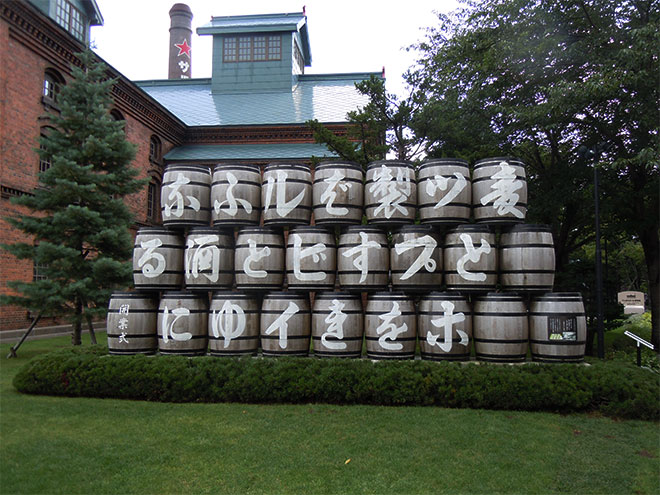
Anyway, I’m focusing on the museum experience, not food. As I entered, I was greeted by a towering four-story wall of barrels. Inscribed on one of them were some letters, as seen in the photo on the left. At first, I couldn’t comprehend what they meant, but as the tour guide explained later, I gained a deeper understanding. These words encapsulated the fundamental principles behind Sapporo Beer Brewery’s beer-making process.
A cheerful lady managing the tour
Every 30 minutes, a tour guide like Miss Suzuki leads a group of 10 people to the 3rd floor where the tour begins. She starts by explaining the history of beer in Japan. According to her, the first Japanese brewer was Seibeh Nakagawa. At the age of 17, he ran away from his home in Niigata prefecture in northeast Japan. He stowed away to Europe and eventually made his way to Germany, where he underwent a two-year training program in beer brewing. Upon his return to Japan, he was the only Japanese with comprehensive knowledge of beer brewing techniques and was entrusted with managing the brewery. At that time, his monthly salary was estimated to be around 1,000,000 yen ($10,000 USD) in today’s terms.
The Concept of The Words
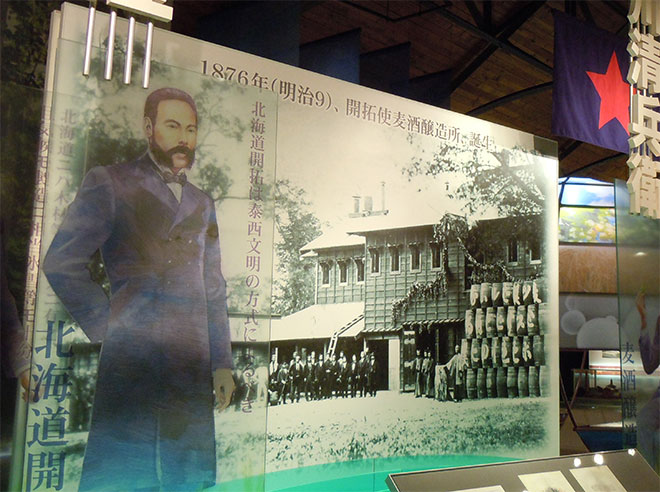
“Has anyone noticed the barrels in the photo? They are the same as the ones in front of the museum building,” she continued. “The letters are arranged to be read from the top-right to the bottom-left, which makes them quite difficult to decipher. Allow me to read them out for you: ‘Managing Barley and Hops, it is going to be a drink made from beer.'” Now it makes sense. These simple words have guided brewers in their daily tasks for generations. I now understand the significance of showcasing this series of barrel walls—it encapsulates the most important message that has endured since the Meiji era.
The First Bottle of Beer in the Meiji era
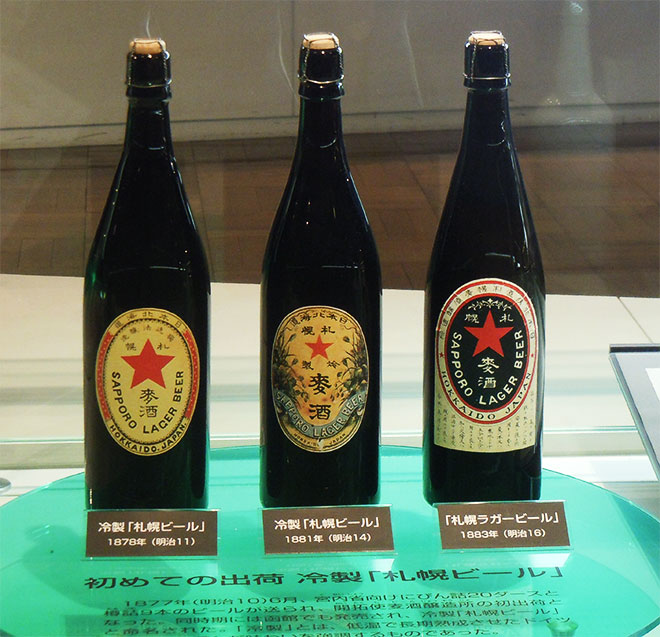
“Here is the first beer bottle released to the public in 1878,” said Miss Suzuki. She pointed to the left bottle on display, where the label already featured the red star symbolizing the North Star.
This red star has since become the iconic logo of Sapporo Beer.
During the early Meiji era, beer was considered one of the most expensive beverages, priced at ¥3,000 to ¥5,000 in today’s currency. Consequently, it was primarily consumed by the upper classes, and not widely popular among common citizens.
Today, it would be unimaginable for us to pay over ¥3,000 for a glass of beer.
The shape and size of bottles
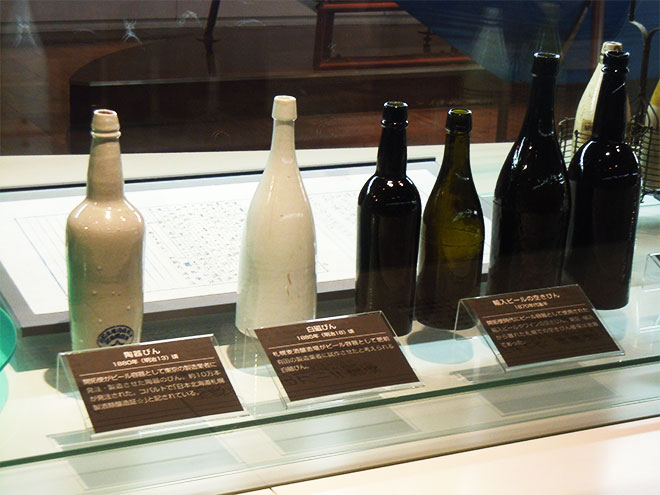
“It’s also interesting to note the variety of bottles on display,” Miss Suzuki remarked. “Back then, there wasn’t a standard size or shape for beer bottles. It was quite challenging to produce large quantities of bottles, so the brewery resorted to reusing various types as temporary measures. They even used sake bottles, which were much larger than typical beer bottles, but were still warmly welcomed by consumers. The bigger the bottle, the more popular it became.”
You Can’t Beat The Big Walt Pan
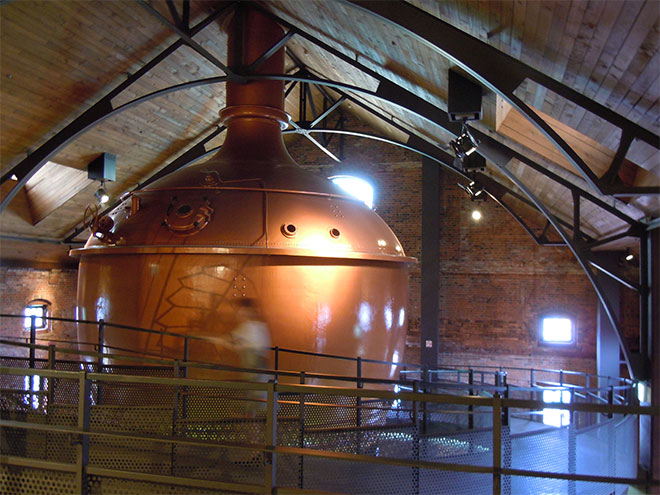
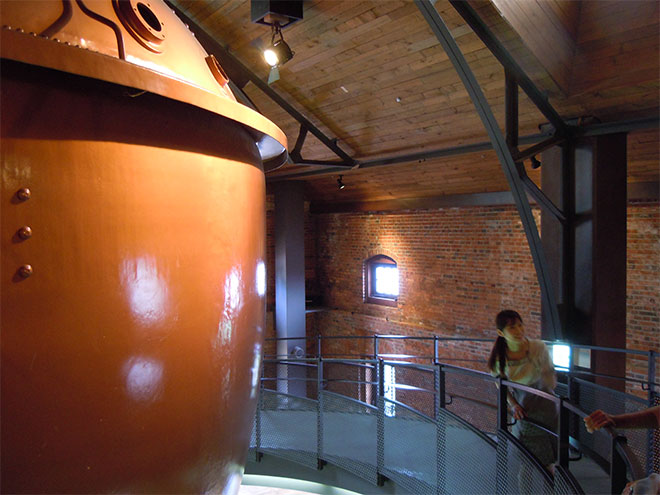
No matter how much you love beer and how much you can drink, you can’t beat the Walt Pan, which produces about 280,000 cans of beer at once. “If you were to drink one can of beer per day, it would take 600 years to drink them all,” Miss Suzuki remarked. Of course, none of us can live for 600 years, unless we were vampires. Even then, we might be killed by liver cancer, I suppose. Nobody beats the Pan!
Did You Know the Best Way to Pour Beer?
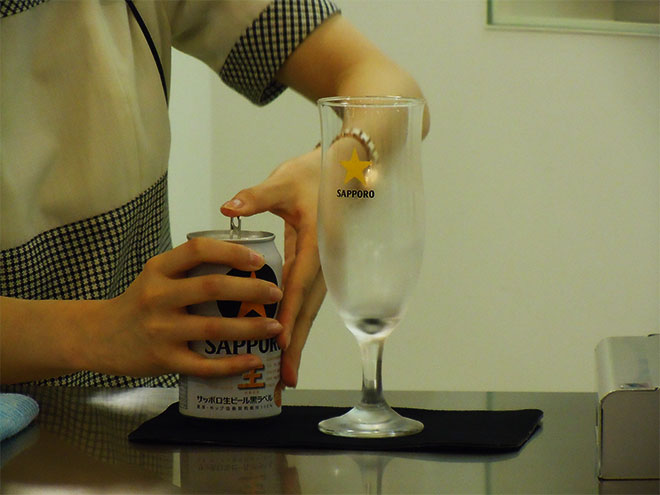
At the end of the tour, she demonstrated the best way to pour beer from a can. It was fascinating to watch, but I can’t explain it like she did—you really have to experience it firsthand. It’s definitely worth hearing her explanation. She selected a kind elderly visitor to taste the beer, making him a fortunate grandpa indeed.
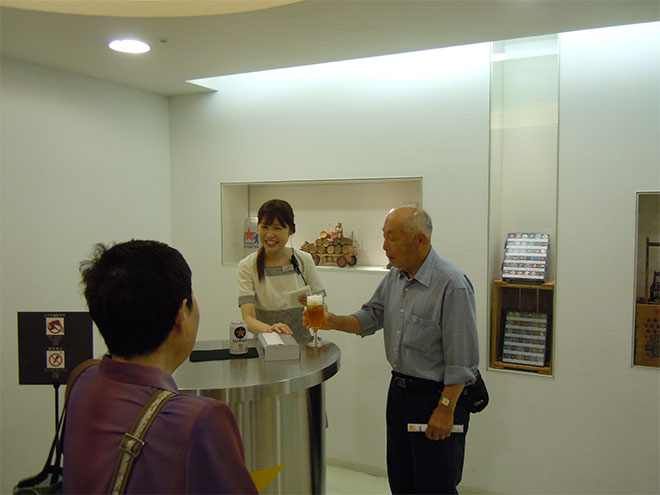
After the tasting session, we explored numerous advertising posters from the Meiji era, each revealing the evolving social reputation and popularity of beer. We appreciated her informative narration throughout the tour. As we descended the stairs, the bar opened and tour participants enjoyed their beer. Unfortunately, I couldn’t indulge as I had to drive home. My wife kindly got me a glass of water instead. That concludes my experience at the Sapporo Beer Museum. Thank you all for reading!
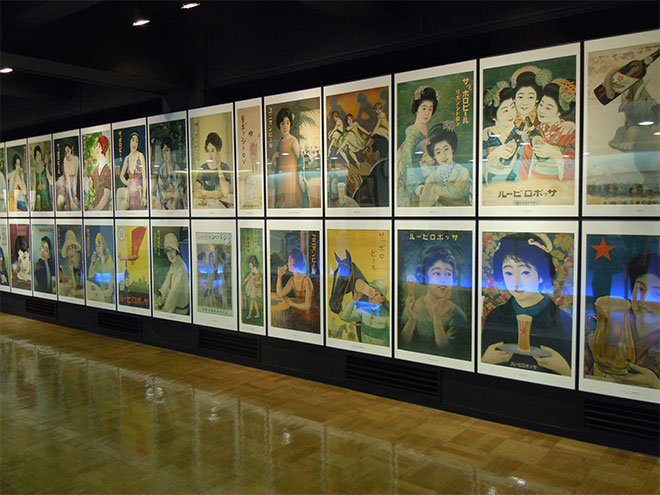
Link
Related Articles
How to Pour a Delicious Sapporo Beer: Instructions from the Lady at the Sapporo Beer Museum
